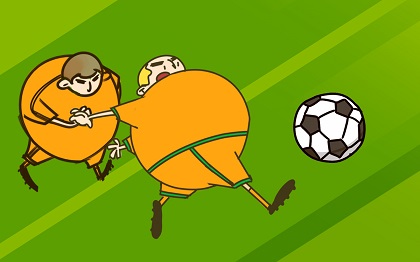新概念英语第四册内容【Lesson28、29、30】已发布,欢迎大家查看。新概念英语第四册内容主要针对的是基础比较薄弱的同学,为了方便同学们可以更好地巩固英语基础,小编还整理了新概念英语第四册课文、新概念英语第四册音频相关内容,便于同学们一起学习!
Lesson 28
 【资料图】
【资料图】
Patients and doctors
病人与医生
What are patients looking for when they visit the doctor?
This is a sceptical age, but although our faith in many of the things in which our forefathers fervently believed has weakened, our confidence in the curative properties of the bottle of medicine remains the same a theirs. This modern faith in medicines is proved the fact that the annual drug bill of the Health Services is mounting to astronomical figures and shows no signs at present of ceasing to rise. The majority of the patients attending the medical out-patients departments of our hospitals feel that they have not received adequate treatment unless they are able to carry home with them some tangible remedy in the shape of a bottle of medicine, a box of pills, or a small jar of ointment, and the doctor in charge of the department is only too ready to provide them with these requirements. There is no quicker method of disposing of patients then by giving them what they are asking for, and since most medical men in the Health Services are overworked and have little time for offering time-consuming and little-appreciated advice on such subjects as diet, right living, and the need for abandoning bad habits etc., the bottle, the box, and the jar are almost always granted them.
Nor is it only the ignorant and ill-educated person who was such faith in the bottle of medicine. It is recounted of Thomas Carlyle that when him in his pocket what remained of a bottle of medicine formerly prescribed for an indisposition of Mrs. Carlyle"s. Carlyle was entirely ignorant of what the bottle in his pocket contained, of the nature of the illness from which his friend was suffering, and of what had previously been wrong with his wife, but a medicine that had worked so well in one form of illness would surely be of equal benefit in another, and comforted by the thought of the help he was bringing to his friend, he hastened to Henry Taylor"s house. History does not relate whether his friend accepted his medical help, but in all probability he did. The great advantage of taking medicine is that it makes no demands on the taker beyond that of putting up for a moment with a disgusting taste, and that is what all patients demand of their doctors -- to be cured at no inconvenience to themselves.
New words and expressions 生词和短语
sceptical
adj. 怀疑的
forefathers
n. 祖先
fervently
adv. 热情地
curative
adj. 治病的
astronomical
adj. 天文学的
tangible
adj.实实在在的
remedy
n. 药物
ointment
n. 药膏
prescribe
v. 开药方
indisposition
n. 小病
inconvenience
n. 令人讨厌的
inconvenience
n. 不便
参考译文
这是一个怀疑一切的时代,可是虽然我们对我们祖先笃信的许多事物已不太相信,我们对瓶装药品疗效的信心仍与祖辈一样坚定。卫生部门的处度药费上升到了天文数字,并且目前尚无停止上升的迹象,这个事实证实了现代人对药物的依赖。在医院门诊部看病的大多数人觉得,如果不能带回一些看得见、摸得着的药物,如一瓶药水,一盒药丸、一小瓶药膏回家的话,就没算得到了充分的治疗。负责门诊的医生也非常乐意为前来看病的人提供他们想要得到的药物,病人要什么就给什么,没有比这样处理病人更快的方法了。因为卫生部门的大多数医生超负荷工作,所以没有多少时间提出一些既费时而又不受人欢迎的忠告,如注意饮食、生活有规律,需要克服坏习惯等等,结果就是把瓶药、盒药、罐药开给看病的人而完事大吉。
并不只是那些无知和没受过良好教育的人才迷信药瓶子。据说托马斯.卡莱尔有过这么一件事:他听说朋友亨利.泰勒病了,就立刻跑去看他,衣袋里装上了他妻子不舒服时吃剩下的一瓶药。卡莱尔不知道药瓶子里装的是什么药,不知道他的朋友得的是什么病,也不知道妻子以前得的是什么病,只知道一种药对一种病有好处,肯定对另一种病也会有好处。想到能对朋友有所帮助,他感到很欣慰,于是急急忙忙来到了亨利.泰勒的家里,他的朋友是否接受了他的药物治疗,历史没有记载,但很可能接受了。服药的优点是:除了暂时忍受一下令人作呕的味道外,对服药人别无其他要求。这也正是病人对医生的要求 -- 病要治好,但不要太麻烦。
Lesson 29
The hovercraft
气垫船
What is a hovercraft riding on when it is in motion?
Many strange new means of transport have been developed in our century, the strangest of them being perhaps the hovercraft. In 1953, a former electronics engineer in his fifties, Christopher Cockerell, who had turned to boat-building on the Norfolk Broads, suggested an idea on which he had been working for many years to the British Government and industrial circles. It was the idea of supporting a craft on a "pad", or cushion, of low-pressure air, ringed with a curtain of higher pressure air. Ever since, people have had difficulty in deciding whether the craft should be ranged among ships, planes, or land vehicles -- for it is something in between a boat and an aircraft. As a shipbuilder, Cockerell was trying to find a solution to the problem of the wave resistance which wastes a good deal of a surface ship"s power and limits its speed. His answer was to lift the vessel out of the water by a great number of ring-shaped air jets on the bottom of the craft. It "flies", therefore, but it cannot fly higher -- its action depends on the surface, water or ground, over which it rides.
The first tests on the Solent in 1959 caused a sensation. The hovercraft travelled first over the water, then mounted the beach, climbed up the dunes, and sat down on a road. Later it crossed the Channel, riding smoothly over the waves, which presented no problem.
Since that time, various types of hovercraft have appeared and taken up regular service. The hovercraft is particularly useful in large areas with poor communications such as Africa or Australia; it can become a "flying fruit-bowl", carrying bananas from the plantations to the ports; giant hovercraft liners could span the Atlantic; and the railway of the future may well be the "hovertrain", riding on its air cushion over a single rail, which it never touches, at speeds up to 300 m.p.h. -- the possibilities appear unlimited.
EGON LARSEN The Pegasus Book of Inventors
New words and expressions 生词和短语
hovercraft
n. 气垫船
Norfolk Broads
n. 诺福克郡的湖泊地区
cushion
n. 座垫
ring
v. 围
Solent
n. (英国的)苏伦特海峡
sensation
n. 轰动
dune
n. 沙丘
plantation
n. 种植园
hovertrain
n. 气垫火车
参考译文
本世纪已研制出许多新奇的交通工具,其中最新奇的要数气垫船了。1953年,有一位50多岁名叫克里斯托弗.科克雷的原电子工程师,改行在诺福克郡的湖泊地区从事造船业,他向英国政府和工业界提出了他研究多年的一项计划。他的设想是:用一个低压空气或软垫来支撑船体,软垫周围用高压空气环绕。自那以后,人们很难决定是否应该将这种运载工具列为轮船、飞机,或是陆上交通工具,因为它是介于船和飞机之间。作为一个船舶技师,科克雷尔在寻找解决波浪阻力的方法,因为波浪阻力浪费掉了船在水面行驶的大量动力,从而限制了船的速度。他的解决办法是把船体提离水面,让船在一个气垫上行驶,气垫只有一两英尺厚。船底装上大量环状喷气嘴以实现这一目的。这样,船就能飞了,但飞不高。它的飞行限决于它所悬浮的水面或地面。
1959年,在苏伦特海峡进行的首次试航引起了轰动,气垫船先是在水面上行驶,后又登上海岸,爬上沙丘,最后停在路上。后来气垫船跨越英吉利海峡,平衡地在波浪上方行驶,波浪不再产生阻力。
从那以后,各种各样的气垫船出现了,并开始了定期航行服务。气垫船在非洲、澳大利亚等交通不发达地区特别有用。它能成为“飞行水果盘子”,把香蕉从种植园动到港口。大型的气垫班轮或许能跨越大西洋。未来的火车或许能成为“气垫火车”,靠气垫在单轨上行驶而不接触轨道,时速可达每小时300英里。气垫船的前途是不可限量的。
Lesson 30
Exploring the sea-floor
海底勘探
How did people probably imagine the sea-floor before it was investigated?
Our knowledge of the oceans a hundred years ago was confined to the two-dimensional shape of the sea surface and the hazards of navigation presented by the irregularities in depth of the shallow water close to the land. The open sea was deep and mysterious, and anyone who gave more than a passing thought to the bottom confines of the oceans probably assumed that the sea bad was flat. Sir James Clark Ross had obtained a sounding of over 2,400 fathoms in 1839, but it was not until of deep soundings was obtained in the Atlantic and the first samples were collected by dredging the bottom. Shortly after this the famous H. M. S. Challenger expedition established the study of the sea-floor as a subject worthy of the most qualified physicists and geologists. A burst of activity associated with the laying of submarine cables soon confirmed the challenger"s observation that many parts of the ocean were two to there miles deep, and the existence of underwater features of considerable magnitude.
Today, enough soundings are available to enable a relief map of the Atlantic to be drawn and we know something of the great variety of the sea bed"s topography. Since the sea covers the greater part of the earth"s surface, it is quite reasonable to regard the sea floor as the basic form of the crust of the earth, with, superimposed upon, it the continents, together with the islands and other features of the oceans. The continents form rugged tablelands which stand nearly three miles above the floor of the open ocean. From the shore line, out a distance which may be anywhere from a few miles to a few hundred miles, runs the gentle slope of the continental shelf, geologically part of the continents. The real dividing line between continents and oceans occurs at the foot a steeper slope.
This continental slope usually starts at a place somewhere near the 100-fatheom mark and in the course of a few hundred miles reaches the true ocean floor at 2,500-3,500 fathoms. The slope averages about 1 in 30. but contains steep, probably vertical, cliffs, and gentle sediment-covered terraces, and near its lower reaches there is a long tailing-off which is almost certainly the result of material transported out to deep water after being eroded from the continental masses.
T.F.GASKELL Exploring the Sea-floor from Science Survey
New words and expressions 生词和短语
navigation
n. 航海
sounding
n. 水深度
fathom
n. 寻(1寻等于1.8米)
porcupine
n. 箭猪
dredge
v. 挖掘
expedition
n. 远征
physicist
n. 物理学家
magnitude
n. 很多
topography
n. 地形
crust
n. 地壳
rugged
adj.崎岖不平
tableland
n. 高地
sediment
n. 沉淀物
terrace
n. 阶地
erode
v. 侵蚀
参考译文
100年前,我们只知道海洋是二维平面形的,以及靠近陆地浅水区的深浅不一能给航行带来危险。无边无际的海洋深邃而又神秘,凡是稍稍想过大海海底的人大概都会认为海底是平坦的。1839年,詹姆斯.克拉克.罗斯爵士曾测得海水深度超过2,400英寻;但直到1869年,皇家学会用英国“豪猪”号舰艇进行了几次巡航后,才在大西洋测得一个海水深度,同时能过挖掘海底,取得了研究海底的首批样品。此后不久,英国的“挑战者”号舰艇对海底的那次考察,把对海床的研究确立为一个值得一流物理学家和地质学家从事的研究课题,铺设海底电缆的热潮很快证实了“挑战者”号的观察结果:海洋中很多地方可深达两三英里,水下特征差异极大。
现在已有足够的水深测量数据来绘制一张大西洋洋底地形图,而且我对海底地形的千变万化也有了一定的了解。既然海洋覆盖着地球的大部分表面,因此完全有理由把海床看作地壳的基本模壳,上面附加着大陆以及岛屿和海洋的其他形态。大陆是崎岖不平的高地,高出辽阔的海洋海底近三英里。从海岸线向大海延伸几英里到几百英里的区域是大陆架慢坡,从地质学上来说,它是大陆的一部分。大陆和海洋的真正分界线是在陡破脚下。
大陆架慢坡一般是从差不多100英寻水深的地方开始的,一直延伸到几百英里远深达2,500至3,500的地方,那里才是真正的海底。坡度平均约为1/30,但其中包括陡峭的、乃至垂直的峭壁和沉积物覆盖的缓和的阶梯地带,在这个地带的低处是很长的一段尾沙地段,基本上可以断定这个地段是大陆块体上侵蚀下来的物质被水冲到深水处形成的。
以上就是为大家整理的“新概念英语第四册手册【Lesson28、29、30】”,更多新概念英语的干货内容,欢迎访问新东方新概念英语课堂,查看新概念英语第四册答案、新概念英语第四册详解和新概念英语第四册听力可供参考。祝同学们学习新概念英语4顺利!
新东方在线英语水平测试
标签:
















